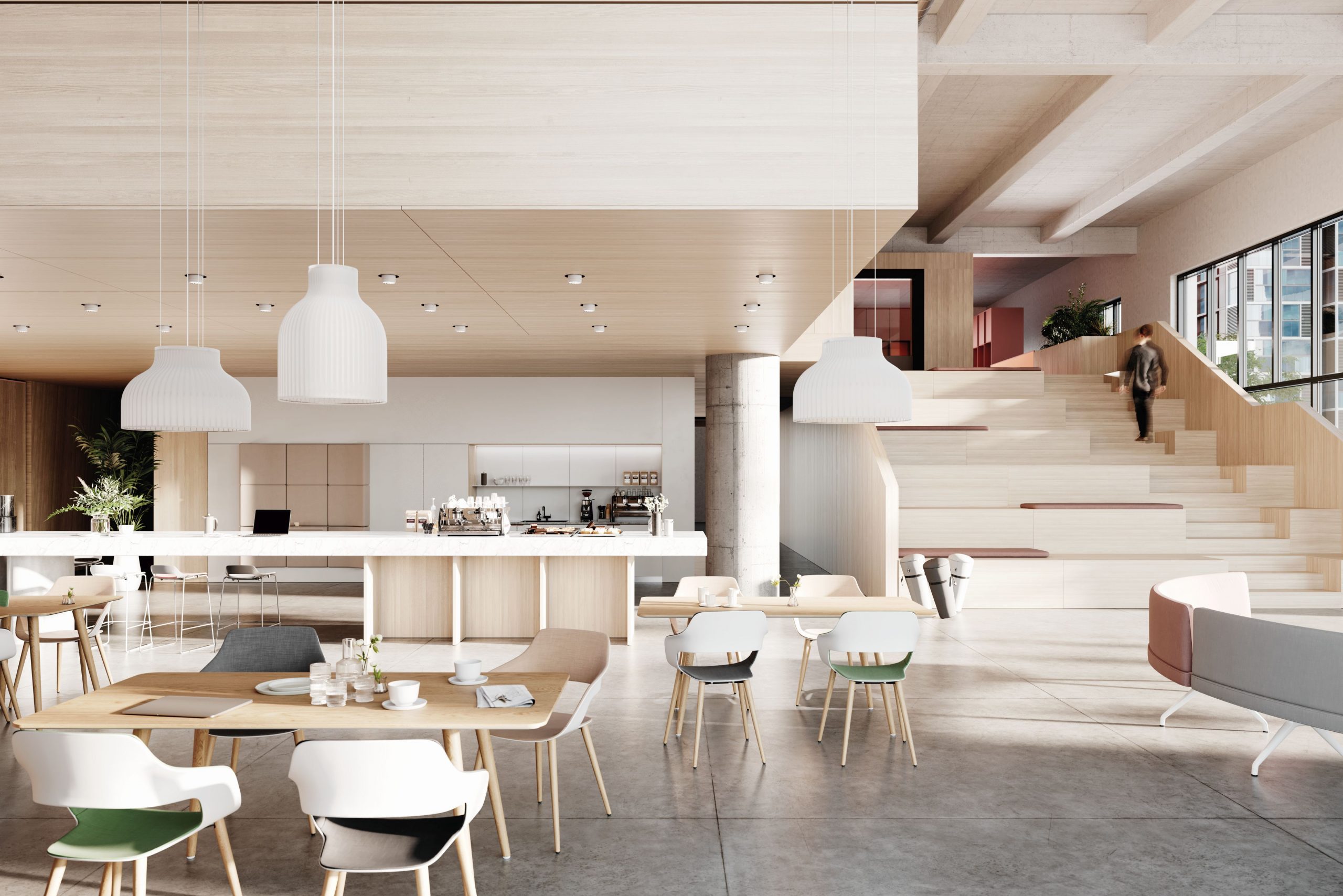
Eating and drinking with others helps create a community both at home and at work. Which is why the human-centered workplace’s kitchenette deliberately features laid-back Occo chairs and Insit benches to turn it into a connectivity hub.
Anyone who spends weeks working from home, starts to lose their bond with colleagues and, last but not least, the organisations they work for too. Because workplaces are, first and foremost, communities made up of the people who work there. Video chats are no match for being with family and friends in person and the same goes for the people we work with. Colleagues can be the go-to people for those who live on their own and lockdown can seem really lonely without them.

Office meeting points act as hubs and provide appropriate backdrops for planned and unplanned interaction with colleagues. The Occo high table with Occo bar stools create a relaxed setting.
As well losing the bond they have with colleagues, employees often feel out of touch with workplace dynamics and possibly their own role in a team. Because if there’s little overlap across geographies or working hours, the subtleties inherent to everyday office life go virtually unnoticed and there’s no chance to practise confidence-boosting skills. Therefore, encouraging a sense of community is vital because many segments are currently having to adapt to the changes imposed by the market quickly. Trust in a strong community underpins the ability to change while people who fear change and dig their heels in are likely to impede it.

Ritualised meetings provide constancy and a point of reference. The conference room with Graph chair at the Graph table is also a spatial symbol for the way a community is structured.
But space, in all senses of the word, is required to generate a community. A community can’t be dictated, but it can be fostered. For instance, rituals in meetings are important so that colleagues feel they are in a familiar environment. Celebrating successes or events together is another key way of strengthening a sense of community. And last but not least, it’s those impromptu encounters with others that forge and strengthen relationships.
Eating and drinking together is also one of the most beneficial and sociable ways of forging a bond with others. There are good reasons why the party in the kitchen always goes with a swing, or relationships grow when your department goes out for a meal, or embarks on a trip.

A company restaurant is a communal hub across departments and disciplines. Eating and drinking brings people closer together, particularly when Occo chairs and tables make no distinction between hierarchies.
As a result, due to its vital role in terms of mental health and well-being, the sense of community underpins the four dimensions that are so vital in the human-centered workplace. It’s the foundation for any form of constructive collaboration and processes of change and innovation in particular. As an integral part of its culture, a sense of community is key to an organisation’s identity and an important means of setting an employer apart from others. And in a knowledge-based economy, it’s crucial to achieving an organisation’s goals and engendering a sense of purpose that goes above and beyond just profit. Therefore, nurturing, maintaining and developing a community is one of the most important roles the office has to play.
For further information about this topic visit the website www.wilkhahn.com.
Planning in an unpredictable era: How can an office become a human-centered workplace or a space where people remain productive and enjoy working in tomorrow’s world too? Find out more in our blog.
Working in the human-centered workplace: How does the human-centered workplace enable deep work? Find out more in our blog.
Meetings in the human-centered workplace: How does the human-centered workplace foster interaction? Find out more in our blog.
Innovation in the human-centered workplace: How does the office inspire people to come up with new ideas? Find out more in our blog.
